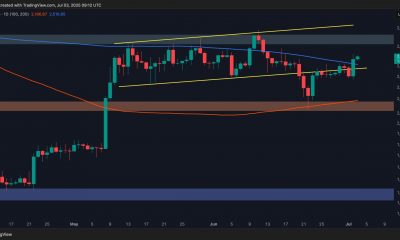Economy
US bank profits set to rise on higher rates while Wall Street lags
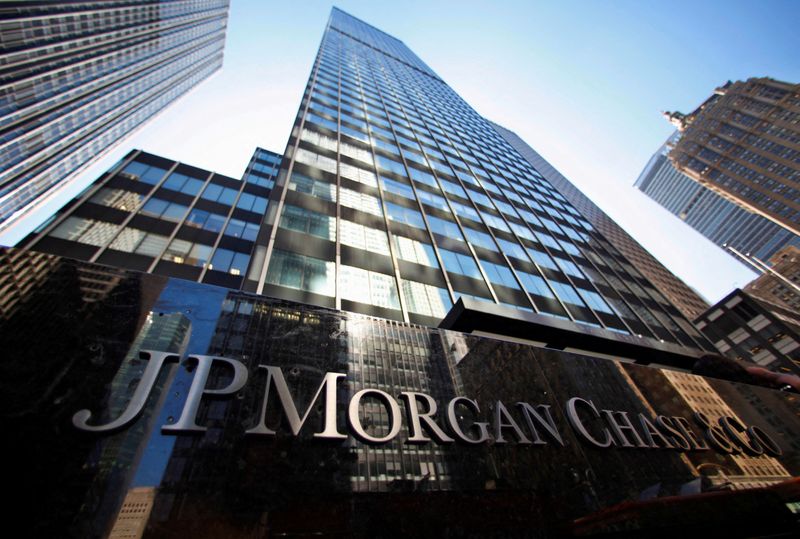
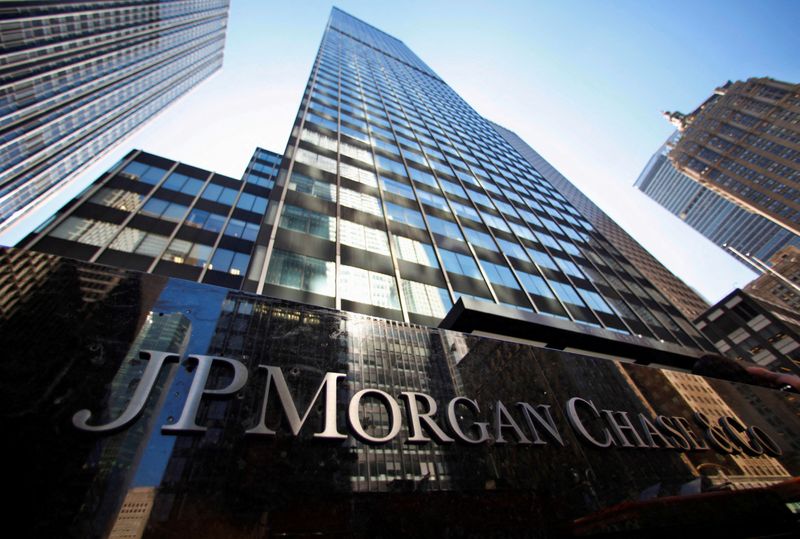
© Reuters. FILE PHOTO: A sign outside the headquarters of JP Morgan Chase & Co in New York, September 19, 2013. REUTERS/Mike Segar/File Photo
By Tatiana Bautzer, Saeed Azhar and Niket Nishant
NEW YORK (Reuters) -The biggest U.S. consumer lenders are set to post higher profits for the third quarter, in contrast with investment banks still facing a dealmaking slump, analysts said.
JPMorgan Chase (NYSE:), which kicks off earnings for big U.S. lenders on Friday, will set the tone for large banks. It is predicted to post a roughly 25% jump in earnings per share (EPS) versus a year earlier, LSEG estimates showed.
Goldman Sachs and Citigroup (NYSE:) are expected to report the biggest EPS declines of 35% and 26% respectively, according to LSEG estimates. Morgan Stanley’s EPS is also forecast to drop.
“This quarter is all about higher interest rates for longer,” said Mike Mayo, an analyst at Wells Fargo. “They will affect banks’ funding, lending, ability of borrowers to repay loans, losses in securities and capital requirements.”
JPMorgan, the nation’s largest lender, is “best positioned” to handle higher rates and could surprise markets with stronger-than expected results, said Bank of America analyst Ebrahim Poonawala, who raised his earnings estimate.
U.S. employers added 336,000 positions in September in a return to the fevered hiring seen during the pandemic, potentially bolstering the case for another interest rate increase by the Federal Reserve. Another hike, and the persistence of elevated borrowing costs, could pour cold water on a nascent recovery in dealmaking.
Wall Street CEOs have cited the return of some initial public offerings, including for SoftBank (TYO:)’s Arm Holdings (NASDAQ:), as signs of a market revival after months in the doldrums. The outbreak of war in Israel could further dampen market sentiment.
“There is a constructive environment, and investment banking fees tend to be higher through the end of the year,” said Jason Goldberg, a banking analyst at Barclays. A broader improvement for capital markets may not come until 2024, he said.
Despite the renewed optimism, investment banking activity remains depressed. Global investment banking fees are down almost 17% in the third quarter from the same period a year earlier, to $15.2 billion, according to data from Dealogic.
Markets could be further shaken by surging U.S. Treasury yields, knocking investor confidence and posing some risks to banks that hold a large volumes of the securities on their books.
As rates rise, bond prices fall, representing losses on paper that would be realized if the banks sold the bonds. After Silicon Valley Bank collapsed in March partly because of losses from its securities portfolio, investors have focused on the risks posed by paper losses on bond holdings across the industry.
Unrealized losses from securities will show a “significant increase” to as much as $670 billion across the industry in the third quarter, estimated Richard Ramsden, a banking analyst at Goldman Sachs. That compares with $558 billion in the second quarter, according to data from the Federal Deposit Insurance Corporation.
For instance, Bank of America had more than $100 billion of unrealized losses on its securities portfolio that it aims to own until maturity, which have weighed on its shares. Its stock is the worst performer among the top six U.S. lenders, falling nearly 18% so far this year.
The KBW index of bank shares, which includes regional lenders, has dropped almost 23% in 2023.
Earnings from regional lenders will also remain in focus after a trio of bank failures earlier this year roiled the industry.
“Investors should be very careful with the regional banks, which have more ties to the fragile commercial real estate loan market and some regional banks have weaker balance sheets, which is concerning,” wrote James Demmert, chief investment officer of Main Street Research, which manages about $2 billion in assets.
Large banks’ consumer divisions are expected to remain a bright spot in their earnings. The strong job market has propped up household spending, although the pace of purchases has slowed, bank executives have noted in recent weeks.
Consumer delinquencies on loan payments have also picked up, but remain at low levels historically.
“It’s still credit normalization, as opposed to a real concern about credit losses getting to recessionary type levels,” Ramsden said. More broadly, “we’re back into this environment where investors think interest rates are going to remain higher for longer,” he said.
EPS ESTIMATES FOR THIRD QUARTER
Bank 3Q23 3Q22 % change
Estimate*
Citi 1.20 1.63 -26%
JPMorgan 3.91 3.12 +25%
Bank of America 0.82 0.81 +1%
Morgan Stanley 1.33 1.47 -9.5%
Goldman Sachs 5.35 8.25 -35%
Wells Fargo 1.24 0.85 +46%
* Median estimate. Source: LSEG
Economy
Russian central bank says it needs months to make sure CPI falling before rate cuts -RBC
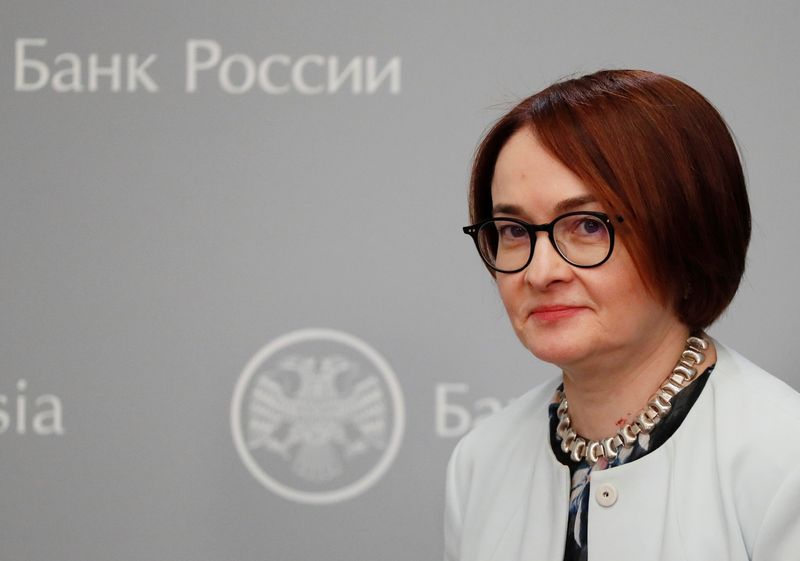
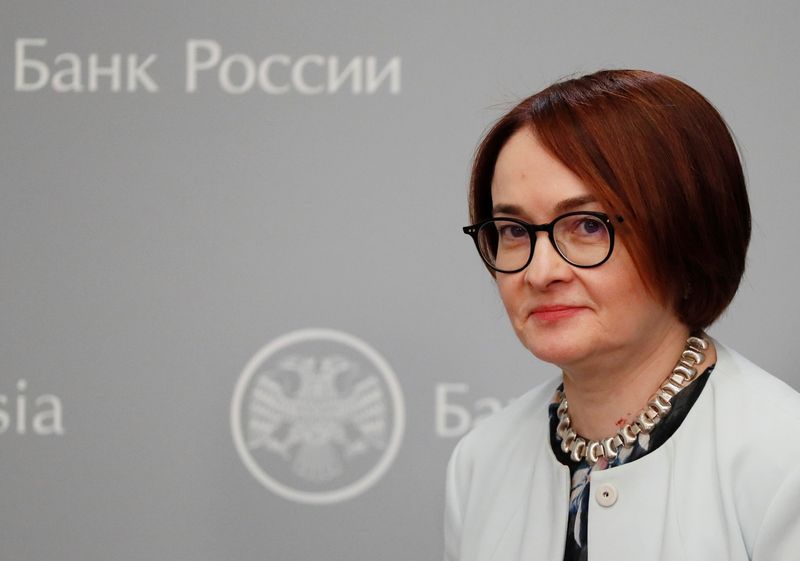
© Reuters. Russian Central Bank Governor Elvira Nabiullina attends a news conference in Moscow, Russia June 14, 2019. REUTERS/Shamil Zhumatov/File Photo
MOSCOW (Reuters) – Russia’s central bank will need two to three months to make sure that inflation is steadily declining before taking any decision on interest rate cuts, the bank’s governor Elvira Nabiullina told RBC media on Sunday.
The central bank raised its key interest rate by 100 basis points to 16% earlier in December, hiking for the fifth consecutive meeting in response to stubborn inflation, and suggested that its tightening cycle was nearly over.
Nabiullina said it was not yet clear when exactly the regulator would start cutting rates, however.
“We really need to make sure that inflation is steadily decreasing, that these are not one-off factors that can affect the rate of price growth in a particular month,” she said.
Nabiullina said the bank was taking into account a wide range of indicators but primarily those that “characterize the stability of inflation”.
“This will take two or three months or more – it depends on how much the wide range of indicators that characterize sustainable inflation declines,” she said.
The bank will next convene to set its benchmark rate on Feb. 16.
The governor also said the bank should have started monetary policy tightening earlier than in July, when it embarked on the rate-hiking cycle.
Economy
China identifies second set of projects in $140 billion spending plan


© Reuters. FILE PHOTO: Workers walk past an under-construction area with completed office towers in the background, in Shenzhen’s Qianhai new district, Guangdong province, China August 25, 2023. REUTERS/David Kirton/File Photo
SHANGHAI (Reuters) – China’s top planning body said on Saturday it had identified a second batch of public investment projects, including flood control and disaster relief programmes, under a bond issuance and investment plan announced in October to boost the economy.
With the latest tranche, China has now earmarked more than 800 billion yuan of its 1 trillion yuan ($140 billion) in additional government bond issuance in the fourth quarter, as it focuses on fiscal steps to shore up the flagging economy.
The National Development and Reform Commission (NDRC) said in a statement on Saturday it had identified 9,600 projects with planned investment of more than 560 billion yuan.
China’s economy, the world’s second largest, is struggling to regain its footing post-COVID-19 as policymakers grapple with tepid consumer demand, weak exports, falling foreign investment and a deepening real estate crisis.
The 1 trillion yuan in additional bond issuance will widen China’s 2023 budget deficit ratio to around 3.8 percent from 3 percent, the state-run Xinhua news agency has said.
“Construction of the projects will improve China’s flood control system, emergency response mechanism and disaster relief capabilities, and better protect people’s lives and property, so it is very significant,” the NDRC said.
The agency said it will coordinate with other government bodies to make sure that funds are allocated speedily for investment and that high standards of quality are maintained in project construction.
($1 = 7.1315 renminbi)
Economy
Russian central bank says it needs months to make sure CPI falling before rate cuts -RBC
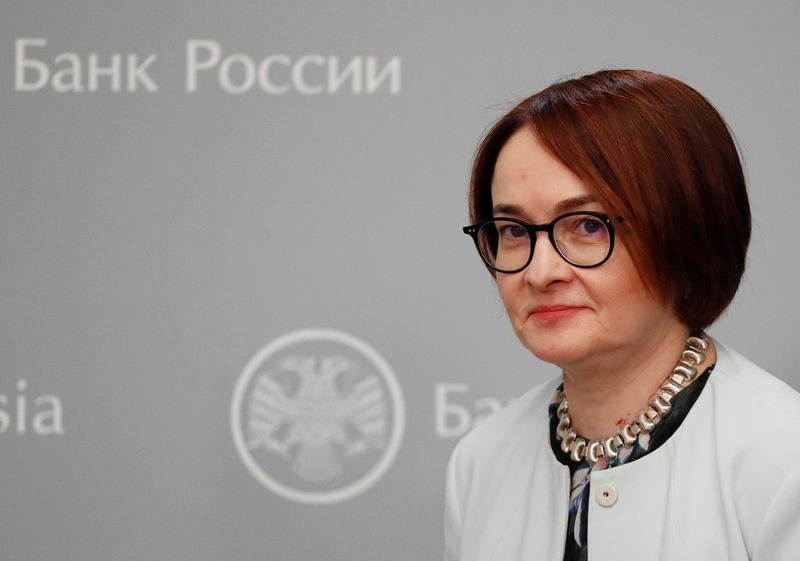

© Reuters. Russian Central Bank Governor Elvira Nabiullina attends a news conference in Moscow, Russia June 14, 2019. REUTERS/Shamil Zhumatov/File Photo
MOSCOW (Reuters) – Russia’s central bank will need two to three months to make sure that inflation is steadily declining before taking any decision on interest rate cuts, the bank’s governor Elvira Nabiullina told RBC media on Sunday.
The central bank raised its key interest rate by 100 basis points to 16% earlier in December, hiking for the fifth consecutive meeting in response to stubborn inflation, and suggested that its tightening cycle was nearly over.
Nabiullina said it was not yet clear when exactly the regulator would start cutting rates, however.
“We really need to make sure that inflation is steadily decreasing, that these are not one-off factors that can affect the rate of price growth in a particular month,” she said.
Nabiullina said the bank was taking into account a wide range of indicators but primarily those that “characterize the stability of inflation”.
“This will take two or three months or more – it depends on how much the wide range of indicators that characterize sustainable inflation declines,” she said.
The bank will next convene to set its benchmark rate on Feb. 16.
The governor also said the bank should have started monetary policy tightening earlier than in July, when it embarked on the rate-hiking cycle.

 Forex3 years ago
Forex3 years agoForex Today: the dollar is gaining strength amid gloomy sentiment at the start of the Fed’s week

 Forex3 years ago
Forex3 years agoUnbiased review of Pocket Option broker

 Forex3 years ago
Forex3 years agoDollar to pound sterling exchange rate today: Pound plummeted to its lowest since 1985

 Forex3 years ago
Forex3 years agoHow is the Australian dollar doing today?

 Cryptocurrency3 years ago
Cryptocurrency3 years agoWhat happened in the crypto market – current events today

 World3 years ago
World3 years agoWhy are modern video games an art form?

 Commodities3 years ago
Commodities3 years agoCopper continues to fall in price on expectations of lower demand in China

 Economy3 years ago
Economy3 years agoCrude oil tankers double in price due to EU anti-Russian sanctions

